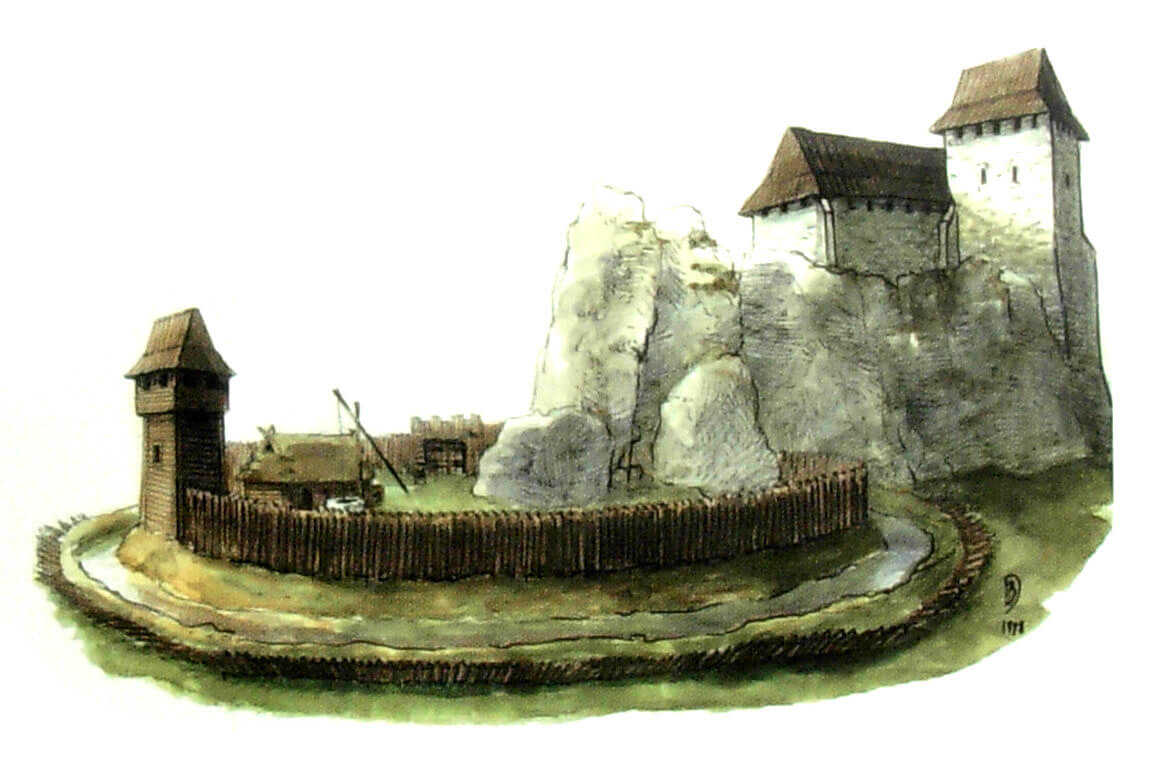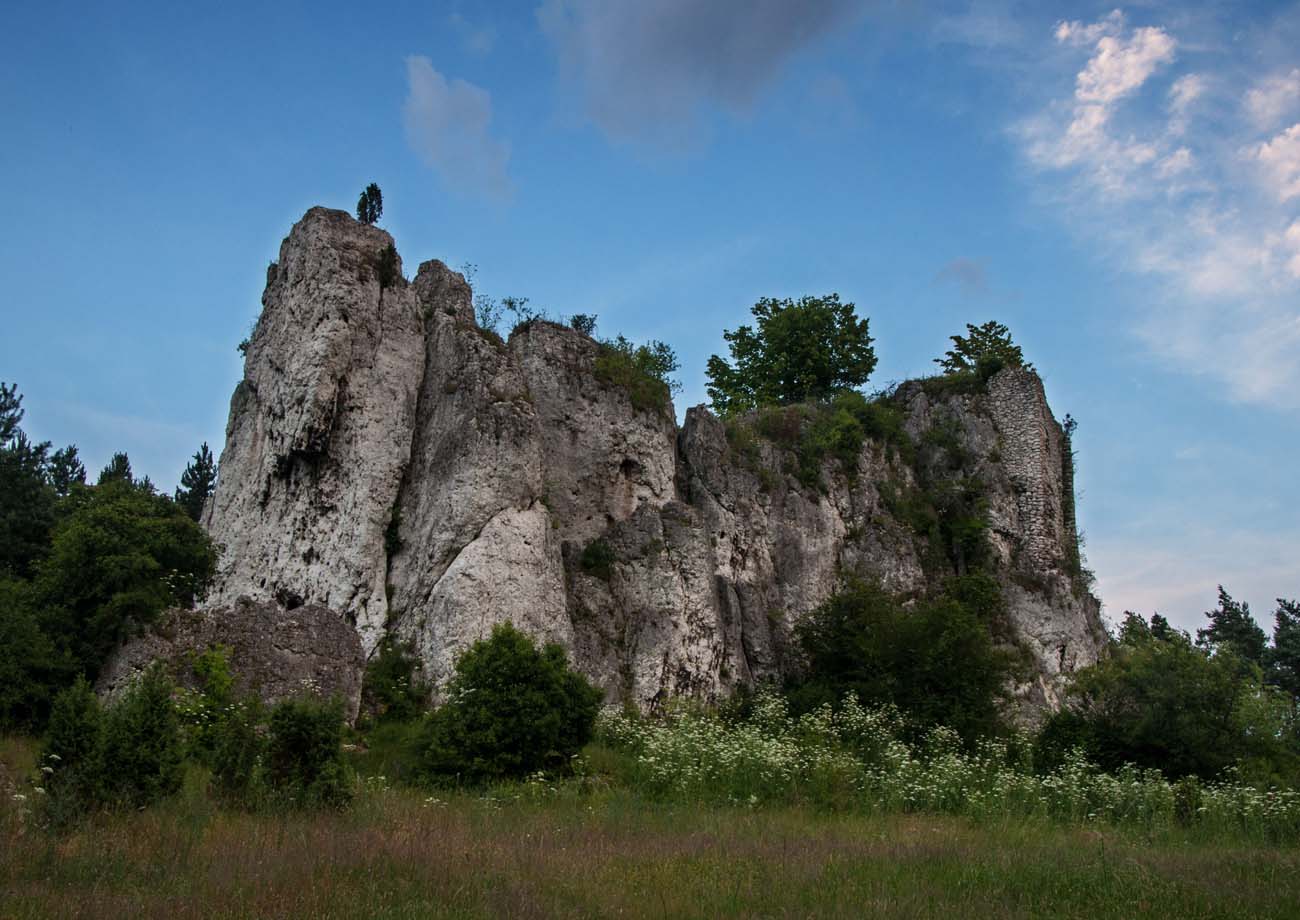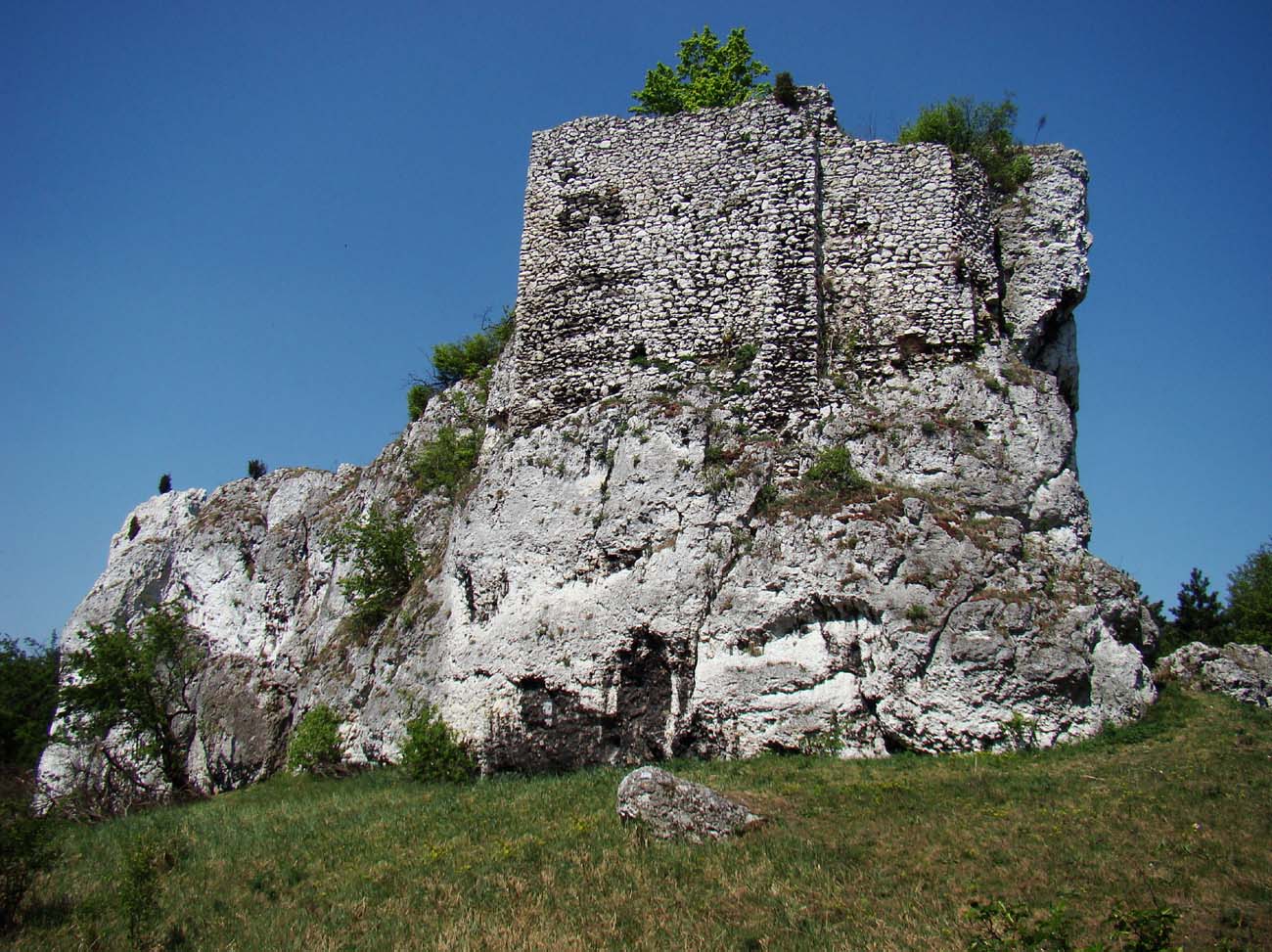History
The watchtower was probably erected in the 14th or at the turn of the 14th and 15th centuries, at the behest of the Polish king, Casimir the Great, or the Silesian prince, Władysław Opolczyk. According to some researchers, the castle in the 15th century was the seat of the knight-robber Mikołaj Kornicz, called “Siestrzeniec”. The watchtower fell into ruin at the end of the 15th or early 16th century.
Architecture
The upper castle occupied the top of hardly accessible, limestone rock with an area of about 165 m2. It included a stone house, probably of the tower type, and perhaps other wooden buildings, and the whole was surrounded by a stone defensive wall along the edge of the rock. Below the rock, on its western and partly southern and northern sides, there was an economic ward, surrounded by a ditch and an earth rampart with a wooden palisade.
Current state
To this day, remains remnants of the circumferential walls of about 26 meters long, visible from the south-east side. Admission to the castle area is free, but there is no entrance to the rock spur.
bibliography:
Leksykon zamków w Polsce, red. L.Kajzer, Warszawa 2003.
Sypek R., Zamki i obiekty warowne Jury Krakowsko-Częstochowskiej, Warszawa 2003.




